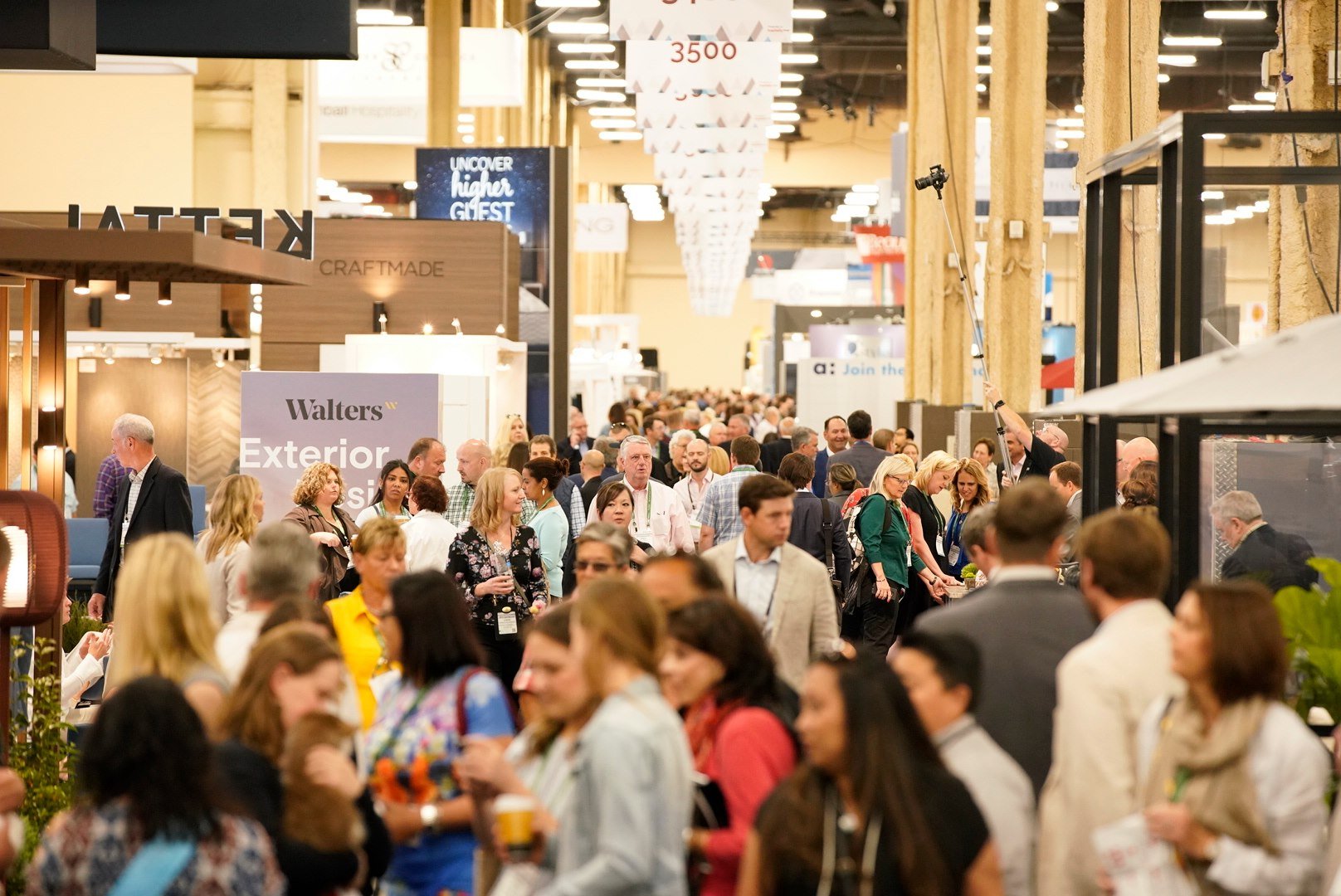We’ve only just started recovering from the whirlwind that was HD Expo 2019 — and boy, have we got a lot to unpack.
Besides all the new colleagues we’ve just met, the leads we’ve discovered, and the experiences we’ll always treasure, we’ve also collected priceless insights, news, and lessons.
Here are three things we learned from HD Expo 2019.
Hospitality is everywhere.
No, we don’t mean the hotels and other living accommodations that exist anywhere there’s civilization. What we mean is this: The characteristics that make up the hallmark of hospitality — comfort, feeling at home, and catering to the human experience — now also pervade spaces like healthcare centers, workplaces, and more.
Read: The Anatomy of Good Coworking Design, in Pictures
Gensler’s Siobhan Barry said it well: “Everyone wants a hospitality experience in their projects, even in aging and” — the thing no one wants to talk about — “end of life.”
Read: Building Retirement Homes: Managing a Senior Home as a Hospitality Service
In the session “The Era of Experience: How Hospitality is Changing the Face of Healthcare,” there was a lot of discussion about how hospitality is not longer a trend, especially for healthcare. In other words, “Hospitals should be hospitable,” according to Mary Frazier.
Suzen Heeley of Memorial Sloan Kettering also talked about how the patient experience should match the high standard of the famous hospital’s cancer care, and how it should be a holistic experience.
It’s not merely about being nice, either: It’s all about remaining viable as a healthcare provider, especially against the ever-growing competition.
Frazier also discussed how views, temperature, food delivery, and privacy should all matter as much to hospitals as to hotels. Good food from whole ingredients should be accessible as well, instead of the typical bland hospital fare. And there should also be emphasis on creating human interactions, instead of bank-like transactions.
Healthcare, as many of the speakers said, is not just the clinical part — it’s also in the food service (for patients, family, and staff), retail (making self-care products available in the hospital, like soap, shampoo, sponges, etc. instead of making them go to a Bed, Bath and Beyond), and workspaces and learning spaces for staff.
Read: The Psychology of Interior Design for the Learning Space
Hotels’s current big thing? Wellness.
When businesspeople choose a hotel among several in one location, one of the biggest differentiators, currently, is the wellness experience.
It’s important to note that wellness doesn’t mean working out with a trainer, but something that will inspire you to do something at work that you never thought to do before, something that helps you be on top of your game.
So what exactly does wellness mean? It depends on whom you’re speaking with. For some hotels, it’s sleeping well and eating well, which would mean blackout curtains, soundproofing, and healthy breakfast options.
Again, it’s all a sound business decision: Helping guests be their best selves brings a lot of return on wellness.
Hoteliers are capitalizing on local flavor.
While we’re on the subject of wellness: This particular experience is becoming more and more localized. For example, packaged activities like hiking, sailing, whitewater rafting, and more are being offered in different hotels, depending on the available resources.
This feature also allows the inclusion of locals into the experience — which doesn’t just mean the creation of employment opportunities, but another way to add local flavor.
Dana Kalzak, VP of Design for Four Seasons Hotels and Resorts, discussed how this new strategy is one way they’re updating the venerated brand. Connecting to the community, Kalzak says, is a great way to create that locally flavored experience for the customer, even without leaving the hotel premises.
Read: Incorporating Local Culture is the Latest Trend in Resort Design
Many of their newer and newly renovated properties, for example, use locally sourced materials. It not only adds character, it also reduces their carbon footprint, and cuts down on cost. Local culture also influences interior design, artwork, and sometimes, menu offerings.
Kalzak also talked about a feature in one of their hotels, called Dinner With Strangers, where long tables are set up and guests eat in a communal fashion. It was a risk, Kalzak said, but they were pleasantly surprised to find out how well it worked.
Embracing local culture produces a completely one-of-a-kind encounter, and helps make hotels destinations in themselves.
Were you at HD Expo 2019? Which sessions were your favorites? Did you find a lot of new products and inspirations to take home?
Fohlio makes specification for any type of material easy and efficient — whether it’s for FF&E, structural, mechanical, exteriors, and more! Got inspirational materials you want to bookmark? We’ve got you covered there, too. Schedule a demo and get your free trial today!
Featured image: HD Expo
